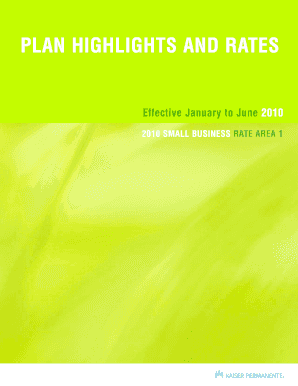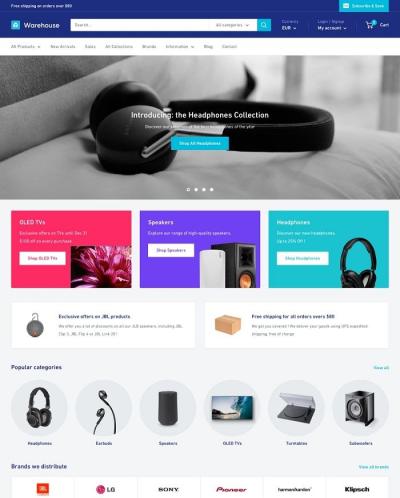When considering an e-commerce platform, it’s essential to understand the pricing structure of Shopify. The costs associated with Shopify vary depending on the plan you choose, and there are additional expenses you may need to consider, such as transaction fees, third-party app subscriptions, and theme purchases. This overview will help you navigate the various plans and what they include, ensuring you select the option that best suits your business needs.
Understanding the Different Shopify Plans
 Shopify offers several pricing plans tailored to different business needs and sizes. These plans are:
Shopify offers several pricing plans tailored to different business needs and sizes. These plans are:
- Basic Shopify: Ideal for new businesses, this plan provides essential features including an online store, fraud analysis, and up to 2 staff accounts.
- Shopify: Aimed at growing businesses, it includes all Basic features plus professional reports, more staff accounts, and lower credit card rates.
- Advanced Shopify: Designed for larger businesses, offering advanced reporting, more payments benefits, and the ability to set up international pricing.
- Shopify Plus: Aimed at high-volume merchants, this bespoke plan offers enterprise-grade features and dedicated support to handle extensive sales.
Each of these plans has a monthly fee, which covers hosting, security, and support. Additionally, businesses may incur transaction fees depending on the payment processor used. Shopify Payments eliminates transaction fees but has specific credit card rates that may vary by plan. Users should also consider the costs of premium themes, apps, and any additional features they might want to implement. In conclusion, understanding Shopify‘s plans and estimating potential costs will help you make an informed decision that aligns with your business aspirations.
Monthly Subscription Fees for Shopify Plans
When you’re starting an online store with Shopify, one of the first things you’ll want to understand is the monthly subscription fees associated with each plan. Shopify offers several plans to fit different business needs, and each comes with its unique features and pricing. Here’s a quick overview of the main Shopify plans and their monthly fees:
- Shopify Basic: $39/month
- Shopify: $105/month
- Shopify Advanced: $399/month
Each plan includes a variety of features tailored to different types of users:
- Shopify Basic is perfect for beginners, providing essential features to get your store up and running.
- Shopify includes additional features such as gift cards and more comprehensive reporting.
- Shopify Advanced is geared towards larger businesses with advanced reporting and lower transaction fees.
It’s important to consider not just the monthly fee, but also how each tier can help you grow your business. As your business expands, you might find value in upgrading to a plan with more features, which can ultimately save you money and time in the long run.
Transaction Fees Explained at Each Plan Level
Understanding transaction fees is crucial when evaluating Shopify plans. These fees vary depending on the plan you choose and can impact your overall profitability. Let’s break it down:
| Plan | Transaction Fee with Shopify Payments | Transaction Fee without Shopify Payments |
|---|---|---|
| Shopify Basic | 0% | 2% |
| Shopify | 0% | 1% |
| Shopify Advanced | 0% | 0.5% |
As the table shows, if you use Shopify Payments, there are no transaction fees across all plans. However, if you choose to use a third-party payment gateway, you’ll incur transaction fees, which can add up quickly. It’s beneficial to consider using Shopify Payments when possible to maximize your profit margins. Ultimately, understanding these fees will help you make an informed decision about the Shopify plan that aligns with your business strategy and budget.
Additional Costs Associated with Using Shopify
When running an online store, it’s important to keep in mind that your expenses won’t stop at the monthly subscription fee. While Shopify offers a range of plans tailored to different business needs, there are several additional costs that you may encounter along the way. Here’s a rundown of some anticipated expenses:
- Transaction Fees: Depending on your chosen plan, Shopify charges transaction fees for sales made through payment gateways. If you opt for Shopify Payments, you can avoid these fees, but other payment processors will incur costs.
- Payment Gateway Fees: If you choose a third-party payment provider, they may charge their own fees, which can add up based on your sales volume.
- Apps and Add-Ons: Shopify’s App Store is a treasure trove of features that can enhance your store’s functionality. Many apps come with monthly fees, and while some are free, premium apps can range from $10 to several hundred dollars a month.
- Theme Costs: While there are many free themes available, investing in a premium theme can improve your store’s appearance and functionality. Prices for these themes typically range from $140 to $180.
- Hosting and Domain: If you choose to buy a custom domain or need additional hosting services, these can also lead to extra costs. Domains generally cost around $10-$20 per year.
- Shipping Costs: Depending on how you handle fulfillment, shipping can become a major expense. Factor in shipping labels, packaging supplies, and any potential carrier fees.
Understanding these additional costs is crucial for crafting an accurate budget and ensuring your online store’s profitability.
Choosing the Right Shopify Plan for Your Business
Selecting the best Shopify plan for your business is a pivotal step that can significantly impact your operations. Each plan offers unique features tailored to different business types and sizes. Here are some key points to consider as you evaluate your options:
- Business Size: If you’re just starting out, the Basic Shopify plan may suffice. This plan provides essential features at a budget-friendly price. As you scale, you might want to upgrade to the Shopify plan or even the Advanced Shopify plan to access more advanced reporting and shipping options.
- Transaction Volume: Assess your anticipated sales volume. Higher transaction volumes may benefit from lower fees available on higher-tier plans. Consider your long-term growth when choosing.
- Feature Needs: Think about the specific features your business requires, like professional reports, the ability to sell on social media, or advanced inventory management. Make sure the plan you choose aligns with these needs.
- Bespoke Functionalities: If you require unique functionalities, explore the necessity of third-party apps. If multiple apps are needed, it may be more economical to select a plan that includes similar features.
To sum it up, take the time to assess your current and future needs, experiment with the options available, and don’t hesitate to consult with Shopify’s customer support if you need assistance. A well-informed decision can set the stage for your business’s success!
Comparative Analysis of Shopify Plans
When considering a Shopify subscription, it’s essential to understand the various plans available and what they offer. Shopify has several tiers: Basic, Shopify, Advanced, and Shopify Plus. Each plan is designed to cater to different business needs and budgets. Let’s break down the key differences:
| Plan | Monthly Cost | Features |
|---|---|---|
| Basic Shopify | $39 |
|
| Shopify | $105 |
|
| Advanced Shopify | $399 |
|
| Shopify Plus | Custom pricing |
|
Choosing the right plan ultimately depends on the size of your business, your budget, and what features are most critical for your operations. If you’re just starting, the Basic plan might be sufficient. However, as your business grows, consider upgrading to leverage advanced features that can drive efficiency and sales.
Tips for Minimizing Shopify Costs
Running an online store with Shopify can get expensive, especially as you add more features and products over time. However, there are several strategies to help minimize your costs:
- Start with the Basic Plan: If you’re just starting, the Basic plan provides all the essential features you need without the higher monthly costs.
- Monitor App Usage: While apps can significantly enhance your store, they often come with additional fees. Review your app subscriptions regularly and eliminate any that aren’t vital to your operations.
- Utilize Free Themes: Instead of purchasing a theme, take advantage of Shopify’s free themes, which are stylish and functional for new merchants.
- Optimize for SEO: Driving organic traffic can minimize reliance on paid advertising. Invest time in SEO best practices to boost your site’s visibility.
- Leverage Social Media: Use social media platforms for marketing rather than costly ad campaigns, especially when starting out. They offer great ways to connect with customers and promote sales for free.
- Consider Annual Billing: If you’re confident in your business’s trajectory, opting for annual billing can provide a significant discount compared to monthly payments.
By utilizing these tips, you can manage your expenses better while still benefiting from Shopify’s robust platform. Remember, it’s all about finding the right balance between functionality and cost!
Shopify Costs Overview: What You’ll Pay for Each Plan
When considering an e-commerce platform, understanding the costs associated with each plan is crucial for budgeting and business planning. Shopify offers a range of pricing options to cater to different business needs, from beginners to established enterprises. The following outlines the various plans available and their associated costs.
Shopify Plans and Pricing Breakdown
| Plan | Monthly Cost | Features |
|---|---|---|
| Basic Shopify | $39 |
|
| Shopify | $105 |
|
| Advanced Shopify | $399 |
|
| Shopify Plus | Custom Pricing |
|
Additional Costs to Consider
While the above plans cover the basic costs of Shopify, there are additional expenses that merchants should anticipate:
- Transaction Fees: Ranging from 0.5% to 2% depending on the plan.
- Domain Registration: A domain typically costs around $14/year.
- Apps and Integrations: Third-party apps can incur monthly fees.
- Themes: Custom themes can range from free to several hundred dollars.
Understanding Shopify’s pricing structure is essential for making an informed decision about which plan aligns with your business goals. Each plan offers distinct features designed to help you sell effectively, but it’s important to evaluate your specific needs and budget.


